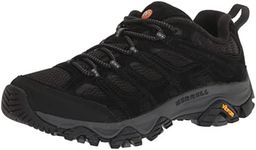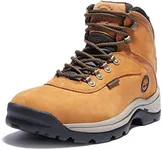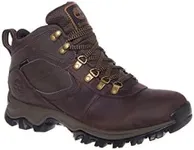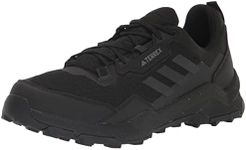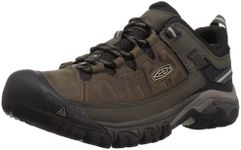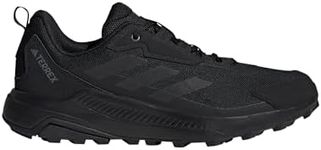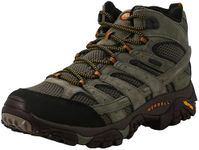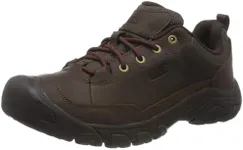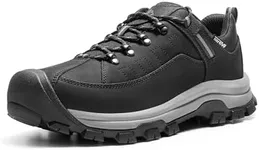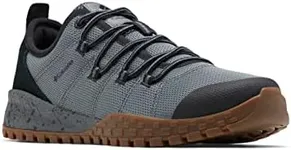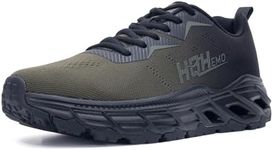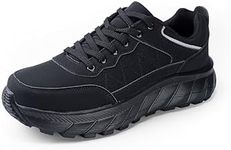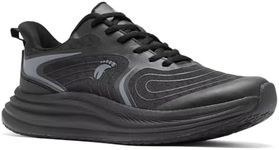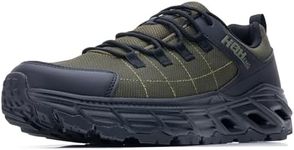Buying Guide for the Best Men Hiking Shoe
Choosing the right hiking shoe is crucial for comfort, safety, and performance on the trails. The right pair of hiking shoes can make a significant difference in your hiking experience, whether you're a casual hiker or a seasoned trekker. When selecting hiking shoes, consider the terrain you'll be hiking on, the duration of your hikes, and your personal comfort preferences. Here are some key specifications to help you make an informed decision.Fit and ComfortFit and comfort are the most important factors when choosing hiking shoes. A well-fitting shoe should have enough room in the toe box to wiggle your toes, a snug fit around the heel to prevent slipping, and a secure fit across the midfoot. Comfort is subjective and varies from person to person, so it's essential to try on different models and walk around in them. Consider the type of socks you'll wear and whether you need extra arch support or cushioning. If you plan on long hikes, prioritize shoes that offer good support and cushioning to reduce fatigue.
Type of Hiking ShoeHiking shoes come in various types, including low-cut hiking shoes, mid-cut hiking boots, and high-cut hiking boots. Low-cut hiking shoes are lightweight and flexible, suitable for day hikes on well-maintained trails. Mid-cut hiking boots offer more ankle support and are ideal for moderate to rough terrain. High-cut hiking boots provide maximum ankle support and protection, making them suitable for challenging and uneven terrain. Choose the type based on the terrain you'll be hiking on and the level of support you need.
MaterialThe material of the hiking shoe affects its durability, breathability, and water resistance. Common materials include leather, synthetic fabrics, and mesh. Leather is durable and offers good water resistance but can be heavier and less breathable. Synthetic fabrics are lighter and more breathable but may not be as durable. Mesh panels enhance breathability, making them ideal for hot weather. Consider the climate and conditions you'll be hiking in when choosing the material. For wet conditions, look for shoes with waterproof membranes like Gore-Tex.
Traction and OutsoleTraction is crucial for maintaining stability and preventing slips on various terrains. The outsole of the hiking shoe determines its grip and traction. Look for shoes with deep, multi-directional lugs for better grip on loose or uneven surfaces. Softer rubber outsoles provide better grip on wet and slippery surfaces, while harder rubber outsoles are more durable and suitable for rocky terrain. Consider the type of terrain you'll be hiking on and choose an outsole that provides the appropriate level of traction.
WeightThe weight of the hiking shoe can impact your overall hiking experience. Lighter shoes reduce fatigue and are more comfortable for long hikes, but they may offer less support and protection. Heavier shoes provide more support and durability but can be tiring over long distances. If you plan on long-distance hikes or carrying a heavy backpack, opt for a balance between weight and support. For shorter hikes or less challenging terrain, lighter shoes may be more suitable.
WaterproofingWaterproofing is important if you plan to hike in wet or muddy conditions. Waterproof hiking shoes have a membrane, such as Gore-Tex, that keeps water out while allowing moisture to escape. This keeps your feet dry and comfortable. However, waterproof shoes can be less breathable, which may cause your feet to sweat in hot weather. If you hike in dry conditions, breathable non-waterproof shoes may be more comfortable. Consider the typical weather and trail conditions you'll encounter when deciding on waterproofing.
Support and StabilitySupport and stability are essential for preventing injuries and ensuring comfort on uneven terrain. Hiking shoes with good arch support, a firm midsole, and a stable heel counter provide better support and stability. Look for shoes with features like shanks or plates that offer additional support and protect against sharp rocks. If you have a history of ankle injuries or plan to hike on rough terrain, prioritize shoes with excellent support and stability features.
